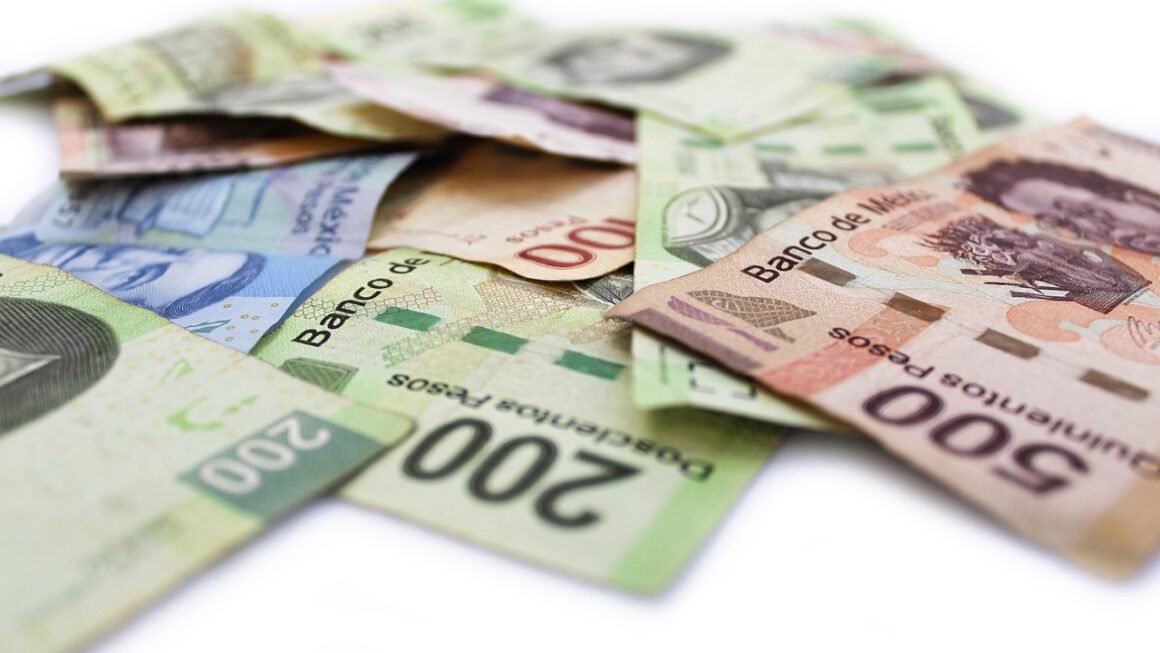Dividends: The investor’s sweet reward – a portion of a company’s earnings distributed directly to its shareholders. In a market buzzing with complex strategies, understanding dividends offers a solid, foundational element to building a robust investment portfolio and creating a steady stream of passive income. Whether you’re a novice investor or seasoned trader, this comprehensive guide breaks down everything you need to know about dividends, from the basics to advanced strategies.
Understanding Dividends: A Shareholder’s Cut
Dividends represent a direct return on your investment in a company’s stock. When a company is profitable, it can choose to reinvest those earnings back into the business or distribute a portion of them to shareholders as dividends. This cash payment is often viewed as a sign of a company’s financial health and stability, making dividend-paying stocks attractive to investors seeking both income and potential capital appreciation.
What are Dividends?
- Dividends are distributions of a company’s earnings to its shareholders.
- They are typically paid out in cash, but can also be issued in the form of additional shares of stock (stock dividends).
- Dividends are usually paid on a per-share basis. For example, if a company declares a dividend of $0.50 per share and you own 100 shares, you would receive $50.
- The decision to pay dividends rests with the company’s board of directors.
Why Do Companies Pay Dividends?
- Attract Investors: Dividend-paying stocks can be particularly attractive to income-seeking investors, such as retirees, who rely on these payments as a source of income.
- Signal of Financial Health: Consistent dividend payments signal that a company is profitable and financially stable.
- Reward Shareholders: Dividends are a way for companies to reward shareholders for their investment and loyalty.
- Reduce Excess Cash: Sometimes, a company may have more cash than it can effectively reinvest in the business, making dividends a way to distribute these excess funds to shareholders.
Dividend Yield: Measuring Dividend Returns
- Definition: Dividend yield is a financial ratio that shows how much a company pays out in dividends each year relative to its stock price.
- Calculation: Dividend Yield = (Annual Dividends per Share / Current Stock Price) x 100
- Example: If a company pays an annual dividend of $2 per share and its stock price is $50, the dividend yield is (2/50) x 100 = 4%.
- Interpretation: A higher dividend yield can be attractive, but it’s important to consider the company’s financial health and sustainability. A very high yield may indicate that the company’s stock price is declining or that the dividend is unsustainable.
Types of Dividends: More Than Just Cash
While cash dividends are the most common form, companies can also distribute earnings through other means. Understanding these different types allows you to make more informed investment decisions.
Cash Dividends
- The most common type of dividend, paid out in cash to shareholders.
- Payments are typically made on a quarterly basis, though some companies pay monthly, semi-annually, or annually.
- Cash dividends provide a direct and tangible return on investment.
Stock Dividends
- Instead of cash, shareholders receive additional shares of the company’s stock.
- The percentage of stock dividend declared determines the number of new shares issued. For example, a 10% stock dividend means you receive 10 additional shares for every 100 shares you own.
- Stock dividends can increase the number of outstanding shares, potentially diluting the value of each individual share (although the total value of your holding remains the same immediately after the dividend is issued).
- Companies may issue stock dividends to conserve cash or to signal confidence in the company’s future prospects.
Property Dividends
- Dividends paid out in assets other than cash or stock, such as physical goods, services, or real estate.
- Less common than cash or stock dividends.
- Example: A real estate investment trust (REIT) might distribute a portion of its property holdings as a property dividend.
Scrip Dividends
- A company issues a promissory note to pay the dividend at a later date, usually with interest.
- Used when a company lacks the immediate cash to pay a dividend but expects to have funds available in the future.
Liquidating Dividends
- A return of capital to shareholders, representing a portion of their initial investment.
- Usually paid when a company is winding down or selling off assets.
- Liquidating dividends are not considered taxable income but reduce the investor’s cost basis in the stock.
Dividend Dates: Knowing the Timeline
Understanding the key dividend dates is crucial for ensuring you’re eligible to receive the dividend payment. Missing even one date can disqualify you from receiving the payout.
Declaration Date
- The date on which the company’s board of directors announces the dividend, including the amount, record date, and payment date.
- Example: “The board of directors of Company XYZ has declared a quarterly dividend of $0.50 per share, payable on [Payment Date] to shareholders of record on [Record Date].”
Ex-Dividend Date
- The date on which a stock begins trading without the value of the next dividend payment.
- Typically two business days before the record date.
- Important: To be eligible to receive the dividend, you must purchase the stock before the ex-dividend date. If you buy the stock on or after the ex-dividend date, you will not receive the dividend.
Record Date
- The date on which the company determines which shareholders are eligible to receive the dividend.
- Shareholders whose names are recorded on the company’s books on this date will receive the dividend payment.
Payment Date
- The date on which the company actually pays the dividend to eligible shareholders.
- The dividend payment is usually deposited directly into your brokerage account.
Example Scenario:
Let’s say a company declares a dividend with the following dates:
- Declaration Date: July 1st
- Ex-Dividend Date: July 27th
- Record Date: July 29th
- Payment Date: August 15th
To receive the dividend, you must purchase the shares before July 27th. If you buy the shares on July 27th or later, the dividend will go to the seller.
Strategies for Dividend Investing
Dividend investing can be a rewarding strategy for building wealth and generating income. Choosing the right approach depends on your individual investment goals and risk tolerance.
Dividend Growth Investing
- Focuses on companies with a history of consistently increasing their dividend payments over time.
- These companies often exhibit strong financial performance, stable earnings, and a commitment to rewarding shareholders.
- Example: Companies like Procter & Gamble (PG), Johnson & Johnson (JNJ), and Coca-Cola (KO) are known as “Dividend Aristocrats” because they have increased their dividends for at least 25 consecutive years.
- Benefit: Provides a growing stream of income and potential capital appreciation.
High-Yield Dividend Investing
- Targets stocks with high dividend yields compared to the market average.
- While high yields can be attractive, it’s important to carefully evaluate the company’s financial health and sustainability to ensure the dividend is not at risk of being cut or eliminated.
- Risk: High-yield stocks can be more volatile and may carry greater risk.
- Due Diligence: Research the company’s payout ratio (the percentage of earnings paid out as dividends) to assess the sustainability of the dividend. A payout ratio significantly above 100% may be unsustainable.
Dividend Reinvestment Plan (DRIP)
- Allows you to automatically reinvest your dividend payments back into the company’s stock, purchasing additional shares.
- DRIPs can be a powerful tool for compounding your returns over time, as you acquire more shares and receive even larger dividend payments in the future.
- Many companies offer DRIPs directly to shareholders, often with no or low transaction fees.
Sector-Specific Dividend Investing
- Certain sectors, such as utilities, real estate (REITs), and consumer staples, tend to offer higher dividend yields due to their stable cash flows and regulated nature.
- Diversifying your dividend portfolio across different sectors can help reduce risk and enhance overall returns.
- Example: Investing in a diversified portfolio of REITs can provide a steady stream of dividend income and exposure to the real estate market.
Risks and Considerations of Dividend Investing
While dividend investing offers many advantages, it’s important to be aware of the potential risks and considerations.
Dividend Cuts or Suspensions
- Companies may reduce or suspend their dividend payments due to financial difficulties, economic downturns, or changes in corporate strategy.
- A dividend cut can negatively impact the stock price and income stream of dividend investors.
- Mitigation: Diversify your dividend portfolio and carefully research the financial health of the companies you invest in.
Tax Implications
- Dividend income is generally taxable, although the tax rate may vary depending on your income level and the type of dividend (qualified vs. non-qualified).
- Qualified dividends are taxed at lower rates than ordinary income. To qualify, the stock must be held for a certain period (usually more than 60 days during the 121-day period beginning 60 days before the ex-dividend date).
- Non-qualified dividends (also known as ordinary dividends) are taxed at your ordinary income tax rate.
- Consult with a tax advisor to understand the specific tax implications of dividend investing in your jurisdiction.
Opportunity Cost
- Investing in dividend-paying stocks may mean missing out on opportunities to invest in growth stocks that offer higher potential capital appreciation.
- Weigh the benefits of dividend income against the potential for higher growth when making investment decisions.
Not All High-Yield Stocks are Good Investments
- Be wary of stocks with unusually high dividend yields, as they may be a sign of financial distress or unsustainable dividend payouts.
- Always conduct thorough research before investing in high-yield stocks.
Conclusion
Dividends offer investors a compelling combination of income and potential capital appreciation. By understanding the basics of dividends, different types of dividends, key dividend dates, and various dividend investing strategies, you can create a well-diversified portfolio that generates a steady stream of income and helps you achieve your financial goals. Remember to consider the risks associated with dividend investing and conduct thorough research before making any investment decisions. With a well-informed approach, dividend investing can be a powerful tool for building long-term wealth.



